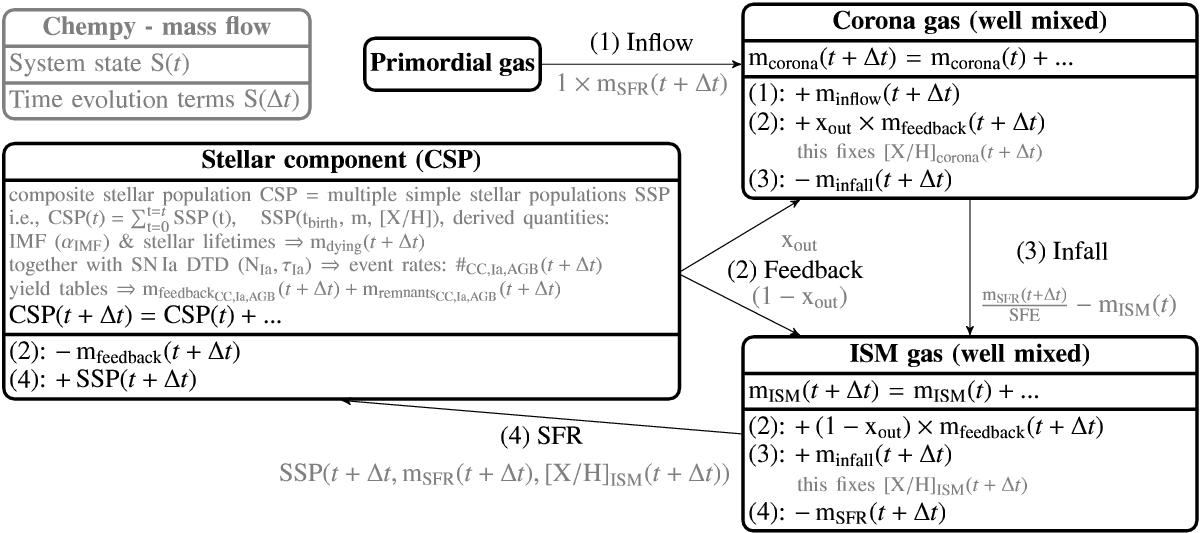Fig. 5

Chempy (one-zone, open-box) mass flow of one time step t → t + Δt, illustrating how Chempy is integrating over time from the initial system state, Sθ(t = 0) (see Fig. 1). Each box represents a subsystem with its current state and the changes to the next time step. The numbered arrows show the sequence of Chempy time integration and the mathematical prescriptions with their parameter dependence. The quantities characterizing the resulting CSP (see Sect. 2.1) are given in gray. The chemical composition [X/H] of each subsystem is tracked. Initial conditions are: no stars, no ISM gas, and ![]() of primordial gas in the corona. In each time step the inflow of primordial gas into the corona is calculated first (1). Then the feedback from all preceding SSPs is distributed among corona and ISM (2). Next Chempy incorporates enough gas from the corona into the ISM to satisfy SFR = SFE × mISM (3). This results in a new SSP forming at that time step from the ISM (4).
of primordial gas in the corona. In each time step the inflow of primordial gas into the corona is calculated first (1). Then the feedback from all preceding SSPs is distributed among corona and ISM (2). Next Chempy incorporates enough gas from the corona into the ISM to satisfy SFR = SFE × mISM (3). This results in a new SSP forming at that time step from the ISM (4).
Current usage metrics show cumulative count of Article Views (full-text article views including HTML views, PDF and ePub downloads, according to the available data) and Abstracts Views on Vision4Press platform.
Data correspond to usage on the plateform after 2015. The current usage metrics is available 48-96 hours after online publication and is updated daily on week days.
Initial download of the metrics may take a while.


